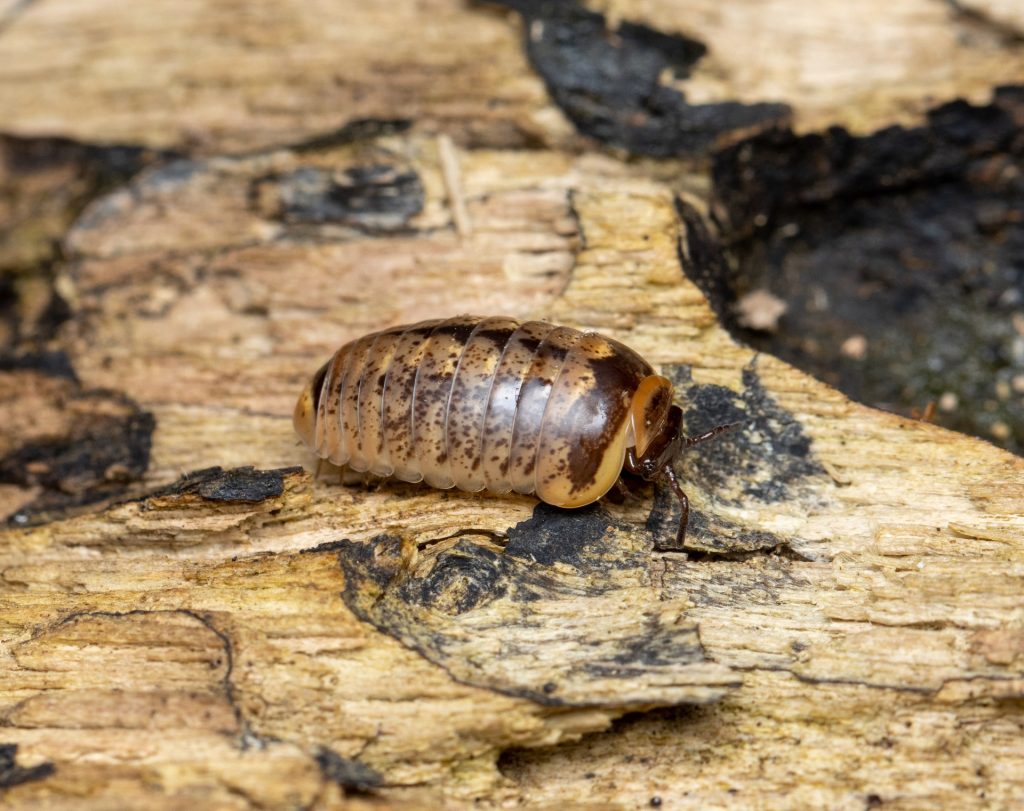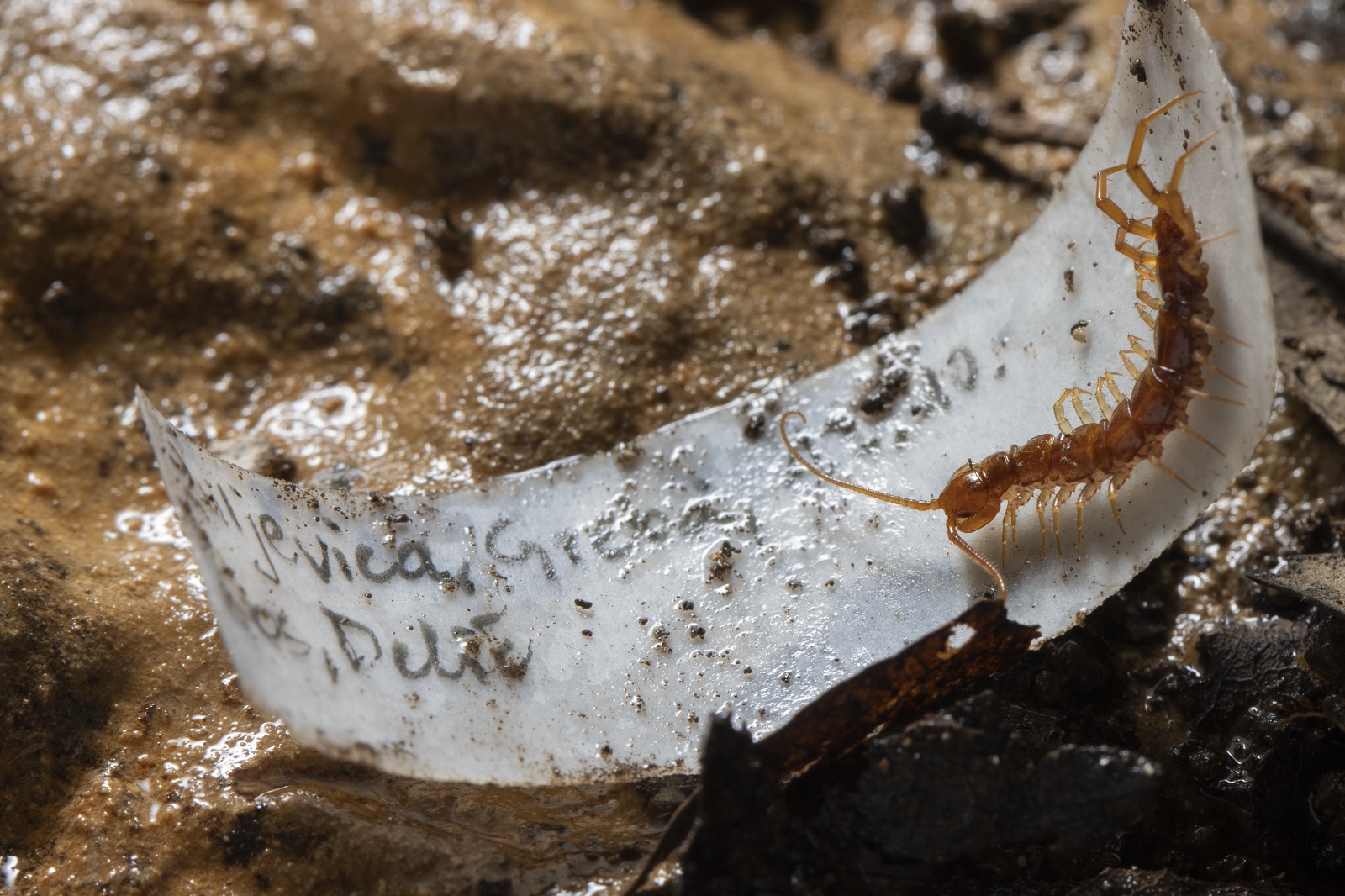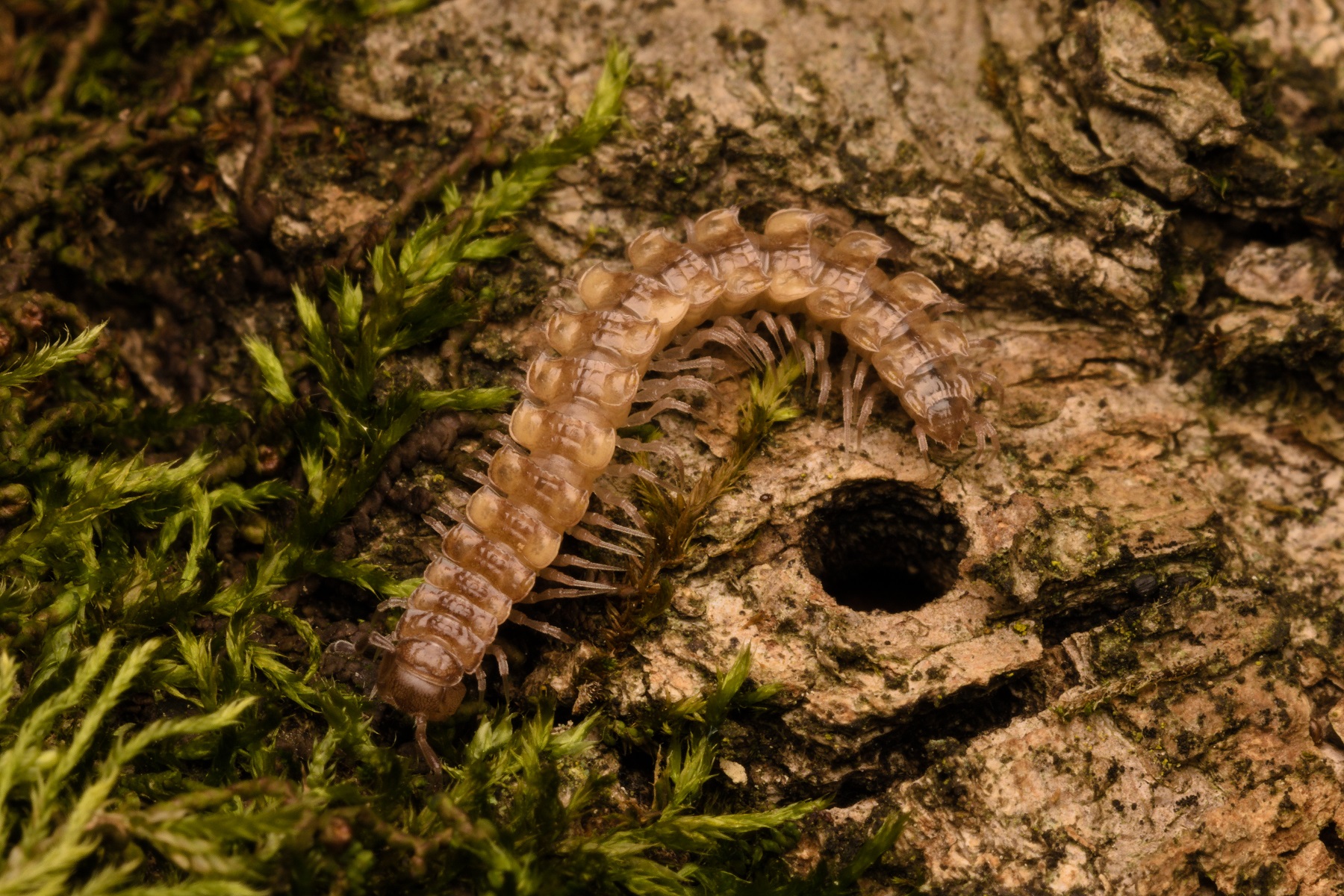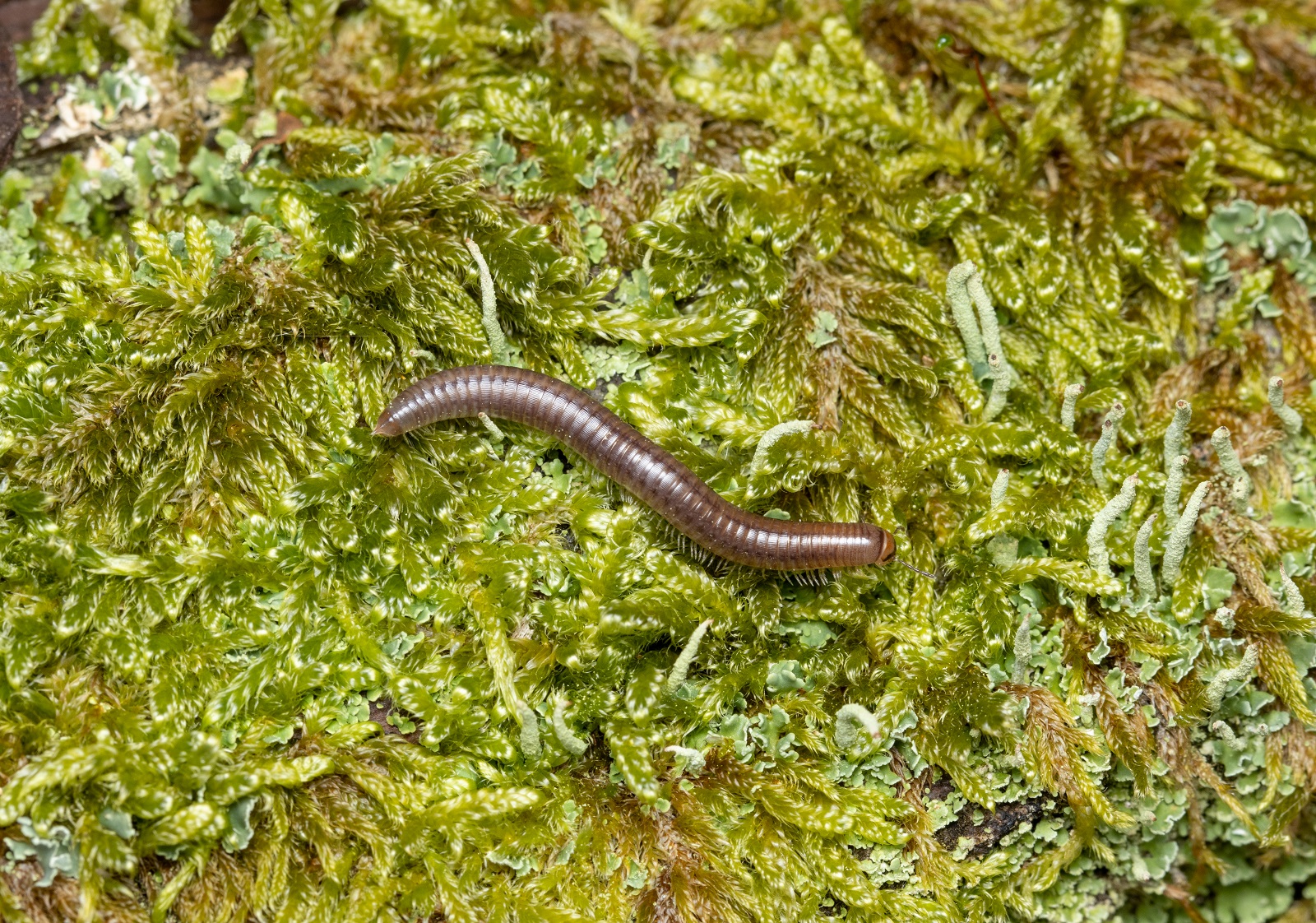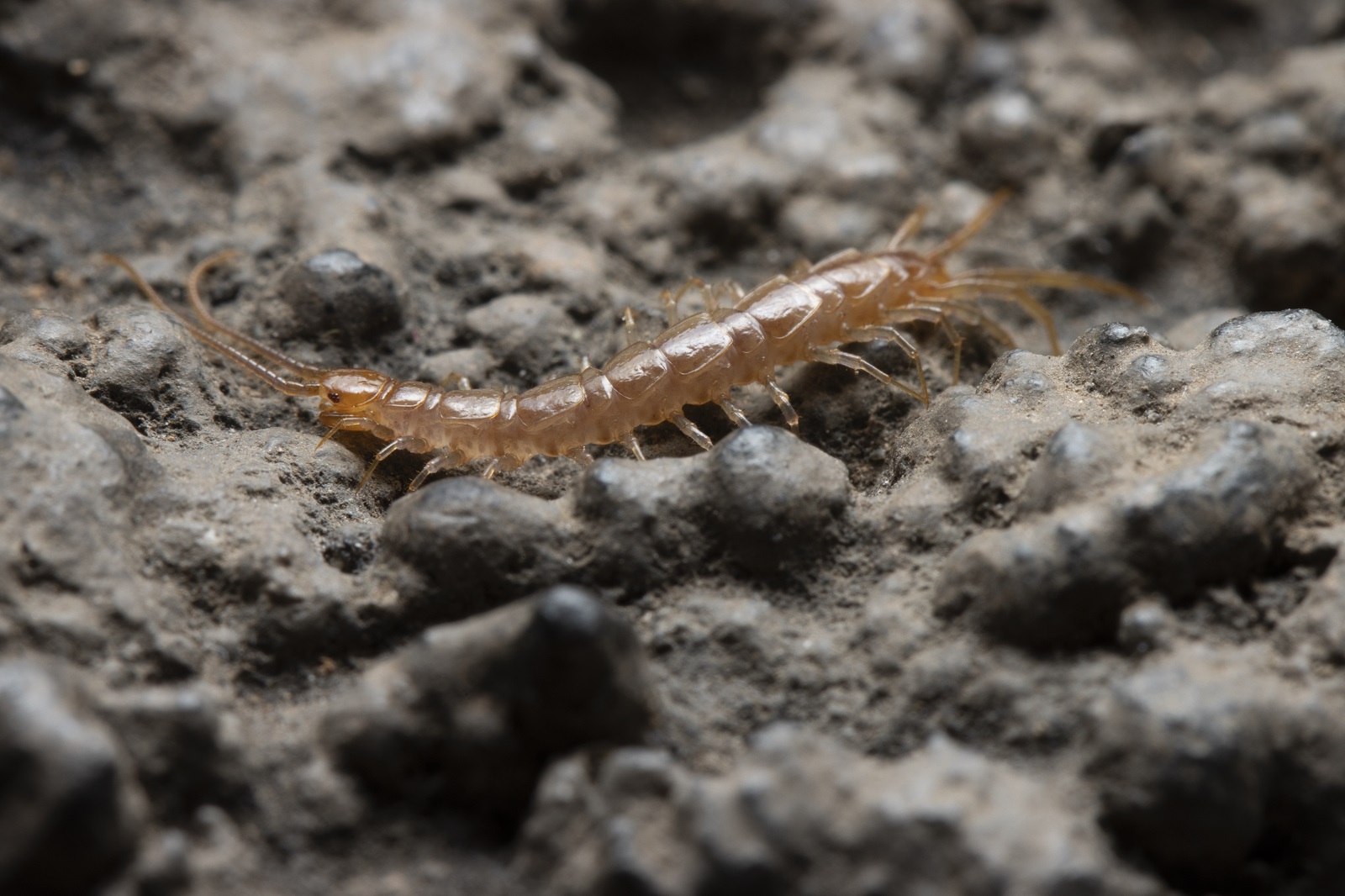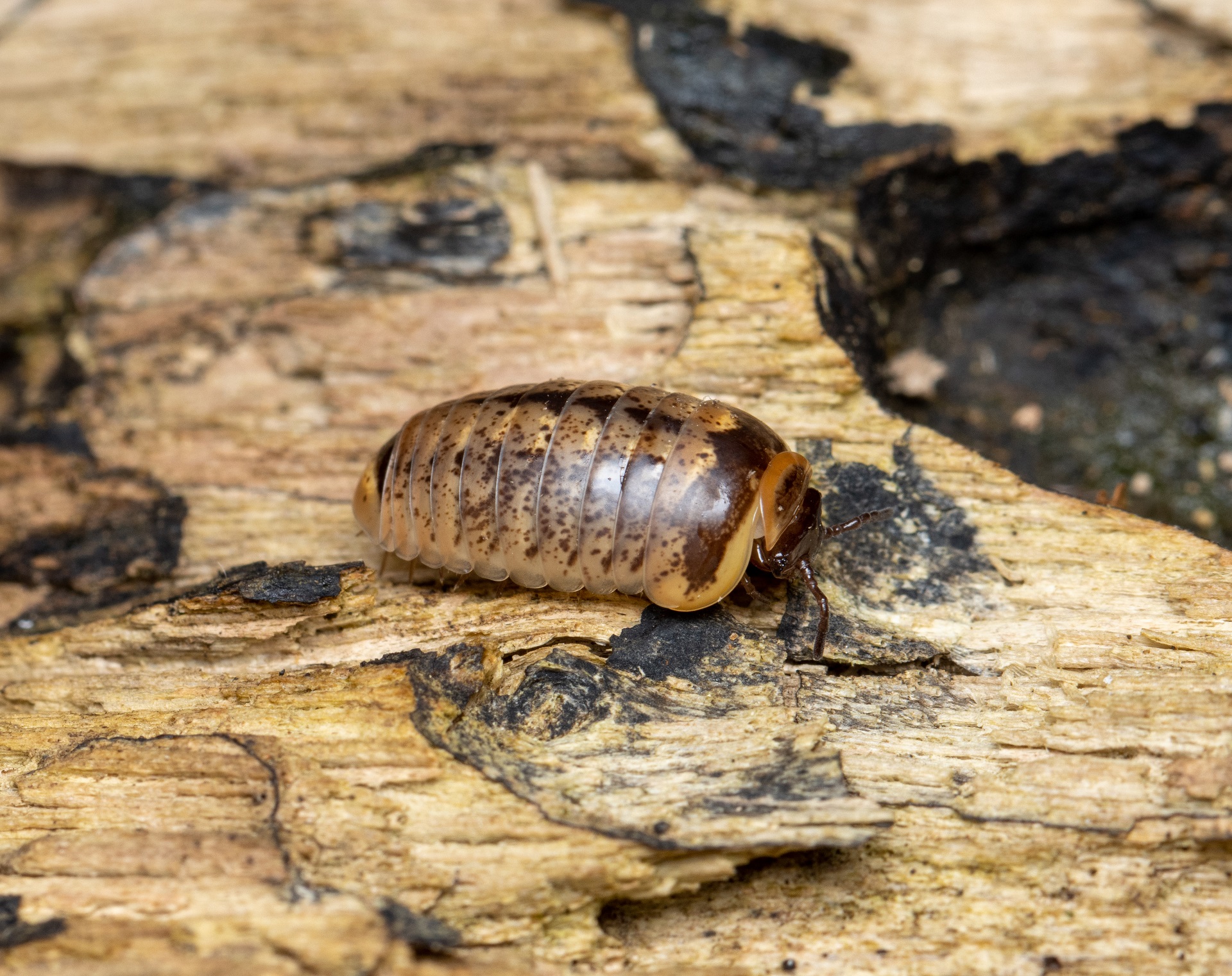- Myriapods
Glomerida
The body of pill millipedes from the order Glomerida consists of a head and a trunk composed of metameric segments. The body of pill millipedes in comparison to other millipedes is relatively short, measuring up to 20 mm in length.
The head is large and round bearing a pair of short antennae and mouthparts. The mouthparts comprise a pair of large mandibles and two pairs of maxillae, which are fused into a gnathochilarium, a large plate-like structure on the basal side of the head. The eyes are either absent or present in the form of a few ocelli. At the base of the antennae, they have organs of Tömösváry with presumed sensory function.
The trunk is arched in a cross-section and consists of 12 segments. The majority of segments are diplosomites, fused pairs of true segments, each bearing two pairs of legs which originate ventrally. The exception are the first three segments behind the head which are single segments. The first segment (collum) is small, while the tergite of the second segment is large. Large is also the shield-like tergite of the last segment. The trunk in males bears 19 pairs of legs while in females the trunk bears 17 pairs of legs. The last pair of legs in males is modified into clasping appendages.
The pill millipedes are frequently encountered in leaf litter, under rocks and in decomposing wood. In comparison to other millipedes the pill millipedes are a bit more resistant to desiccation.
They are herbivores feeding on decaying plant material and as such are important decomposers. As a defense mechanism against predators they roll into a ball, similar to certain terrestrial isopod crustaceans (Oniscidea). An additional defense mechanism they employ is the secretion of noxious or toxic liquids.
Juvenile animals have less body segments than adults. During their development additional segments are added during molts until the final number of segments is reached in adult animals. The adult animals continue with periodic molts.
More photos
Related arthropods
Authors
- Urban Bogataj,
- Gregor Bračko,
- Teo Delič,
- Cene Fišer,
- Žiga Fišer,
- Rok Kostanjšek,
- Rudi Verovnik,
- Miloš Vittori,
- Valerija Zakšek.
Students Vito Ham, Vesna Jurjevič, Gaj Kušar, and Adrijan Samuel Stell Pičman also participated in the project.
